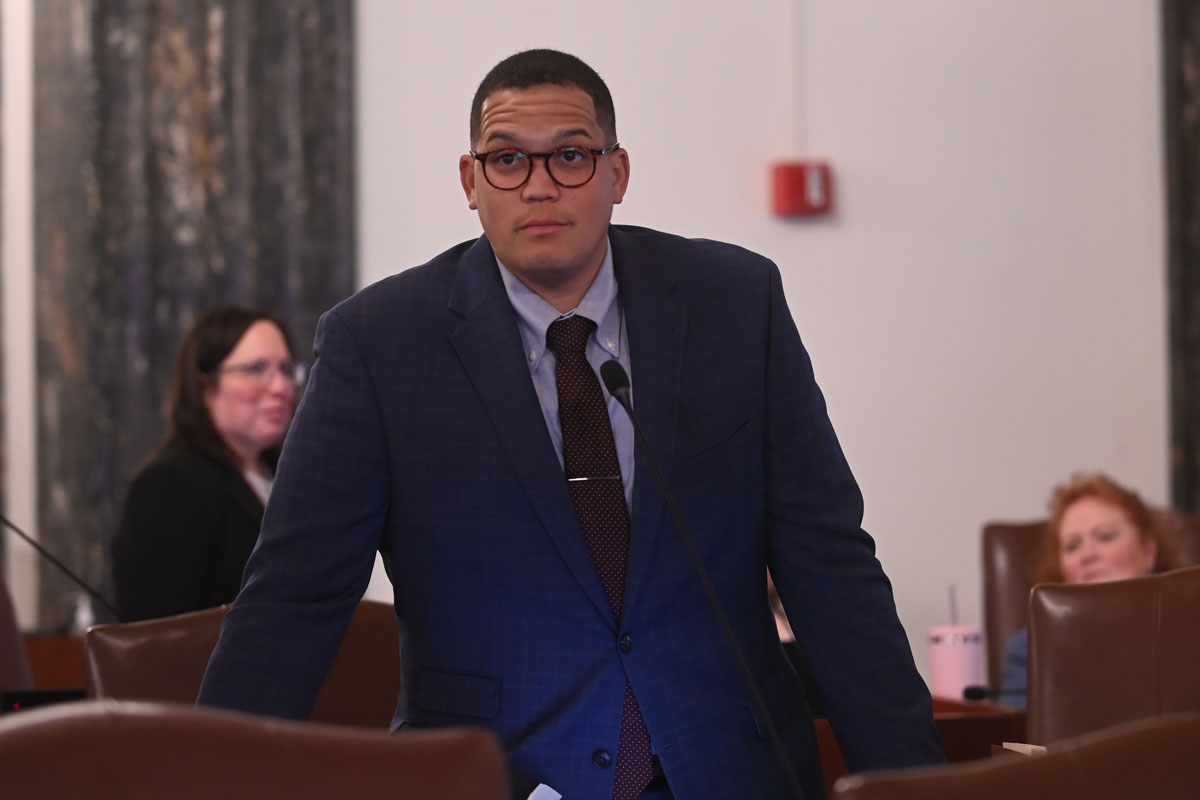Peters advances measure to update outdated child labor laws
Peters advances measure to update outdated child labor laws Illinois Senate Democratic

Safeguarding the Rights of Young People: Update on Child Labor Regulations

SPRINGFIELD — In an effort to safeguard the rights of young people, State Senator Robert Peters has successfully advanced a measure out of the Senate to update regulations on child labor. The aim of this update is to shield young individuals from exploitation and ensure their safety in the workforce.
Commitment to Protecting Youth
Senator Peters, representing Chicago and a member of the Democratic Party, emphasizes the importance of protecting youth in work environments. By implementing these updated regulations, young individuals will have the opportunity to learn and grow while contributing positively to the economy without fear of harm.
Proposed Changes to Child Labor Laws
Under Senate Bill 3646, additional regulations will be established for minors in the workforce. Senator Peters’ measure proposes changes to various aspects of current child labor laws, including working conditions, age requirements, and industries prone to exploitation.
Extending Safeguards to All Minors
Peters’ legislation extends safeguards to minors who are not enrolled in conventional public or private educational institutions with standard school schedules. This measure clearly defines when students are permitted to work, ensuring their education is not compromised. Additionally, the proposed legislation adds to the list of prohibited jobs for minors and jobs requiring adult supervision. It also imposes increased penalties for violations, further discouraging exploitation.
Senate Bill 3646 has successfully advanced to the House for further deliberation. By prioritizing the safety and well-being of young individuals in the workforce, Illinois is taking significant steps towards achieving the Sustainable Development Goals (SDGs), particularly Goal 8: Decent Work and Economic Growth, and Goal 4: Quality Education.
SDGs, Targets, and Indicators
1. Which SDGs are addressed or connected to the issues highlighted in the article?
- SDG 8: Decent Work and Economic Growth
- SDG 4: Quality Education
The article discusses the need to update regulations on child labor to protect young individuals from exploitation. This aligns with SDG 8, which aims to promote sustained, inclusive, and sustainable economic growth, full and productive employment, and decent work for all. It also connects to SDG 4, which focuses on ensuring inclusive and equitable quality education and promoting lifelong learning opportunities for all.
2. What specific targets under those SDGs can be identified based on the article’s content?
- Target 8.7: Take immediate and effective measures to eradicate forced labor, end modern slavery and human trafficking, and secure the prohibition and elimination of the worst forms of child labor.
- Target 4.4: By 2030, substantially increase the number of youth and adults who have relevant skills, including technical and vocational skills, for employment, decent jobs, and entrepreneurship.
The article highlights the need to update child labor laws to protect young individuals from exploitation, which directly addresses Target 8.7 under SDG 8. Additionally, by ensuring that young people are protected in work environments, they have the opportunity to learn and grow while contributing positively to the economy, which aligns with Target 4.4 under SDG 4.
3. Are there any indicators mentioned or implied in the article that can be used to measure progress towards the identified targets?
Yes, there are indicators mentioned in the article that can be used to measure progress towards the identified targets. These include:
- Changes to various aspects of current child labor laws, such as working conditions, age requirements, and industries prone to exploitation.
- Clear definition of when students are permitted to work, extending safeguards to minors not enrolled in conventional public or private educational institutions with standard school schedules.
- Addition to the list of prohibited jobs for minors and jobs requiring adult supervision.
- Imposition of increased penalties for violations of child labor laws.
These indicators demonstrate the proposed changes and improvements in child labor regulations, which would contribute to eradicating forced labor, protecting young individuals, and ensuring their access to quality education and decent work.
4. Table: SDGs, Targets, and Indicators
| SDGs | Targets | Indicators |
|---|---|---|
| SDG 8: Decent Work and Economic Growth | Target 8.7: Take immediate and effective measures to eradicate forced labor, end modern slavery and human trafficking, and secure the prohibition and elimination of the worst forms of child labor. | – Changes to various aspects of child labor laws – Clear definition of when students are permitted to work – Addition to the list of prohibited jobs for minors and jobs requiring adult supervision – Imposition of increased penalties for violations |
| SDG 4: Quality Education | Target 4.4: By 2030, substantially increase the number of youth and adults who have relevant skills, including technical and vocational skills, for employment, decent jobs, and entrepreneurship. | – Changes to child labor laws to protect young individuals in work environments, allowing them to learn and grow while contributing positively to the economy |
Behold! This splendid article springs forth from the wellspring of knowledge, shaped by a wondrous proprietary AI technology that delved into a vast ocean of data, illuminating the path towards the Sustainable Development Goals. Remember that all rights are reserved by SDG Investors LLC, empowering us to champion progress together.
Source: illinoissenatedemocrats.com

Join us, as fellow seekers of change, on a transformative journey at https://sdgtalks.ai/welcome, where you can become a member and actively contribute to shaping a brighter future.







